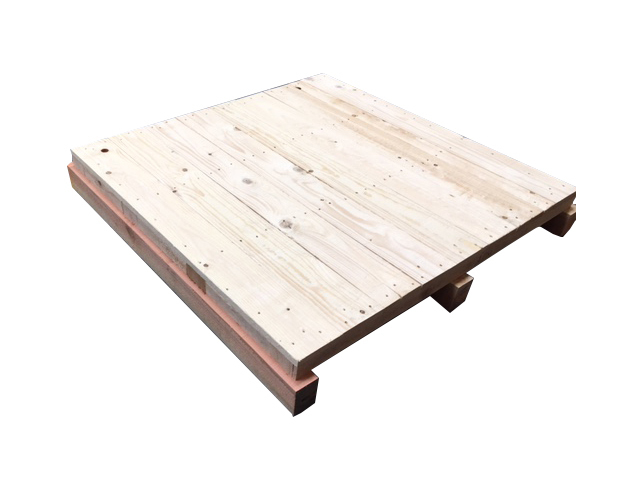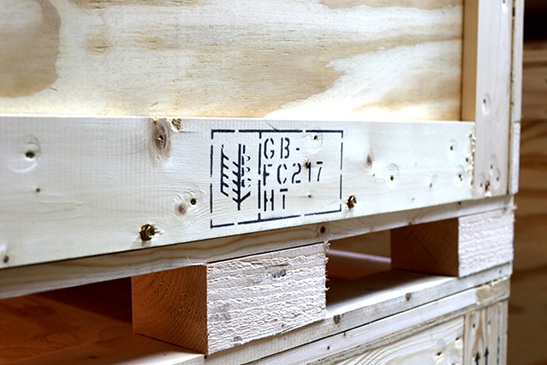ISPM15 standards provide the criteria for wood used as packaging material. They are intended to prevent the spread of pests and diseases and concern timber and dunnage packing used in international trade.
What does ISPM15 stand for?
ISPM15 stands for International Standards for Phytosanitary Measures Publication No. 15, and you can access a full copy of ISPM15 regulations here. The standards were introduced in 2002.
When should ISPM15 be used?
Wood is widely used when packaging cargo for international trade. Essentially, if you are using wood for export packing, you will need to pay close attention to the ISPM15 standards.
In general, it is sensible to use an experienced export packing provider, such as IES. If you choose to create your own cargo packaging or alter packaging independently there is always the risk that you could break an ISPM15 regulation.
The IES wooden crate range is suitable for a variety of purposes and conditions - read about our ISPM15-compliant packing cases and crates here
Which countries require ISPM15?
ISPM15 is subscribed to by 77 countries at the time of writing, including the 27 European Union member states. It should be noted that within the EU, ISPM15 is not required for moving goods between EU member states, but is required for imports into the EU from outside the EU. There may be specific terms that apply to a certain country subscribed to ISPM15. These can be checked on the Timcon website

Why heat treat wooden machine bases and crates?
One of ISPM15’s key stipulations is that wood packaging material is debarked and heat-treated, before being stamped with a compliance mark.
The main reason to heat treat wooden export packing solutions is the elimination of any living organisms within the wood. This can ensure that pests and diseases are not transferred to other countries in the process of shipping goods. Extracting moisture from wood also makes them lighter, meaning they are cheaper to transport.
How to heat treat wooden machine bases, crates and cases
These are typically heat-treated in a kiln or specialised plant. The device can heat the wood to a given temperature - usually an internal temperature of at least 56°C – to be maintained for a duration of 30 minutes. This process is considered to be the most effective in destroying pests and diseases contained by wood and is accepted as the most environmentally friendly method, too.
How to recognise heat treated wood
Wood that is heat-treated to ISPM15 standard should be marked with the ‘HT’ stamp. This is a sign that the condition of the wood packaging material is fit for international trade. When a professional export packer such as IES is appointed, it is normal for the stamp of the export packing provider to be added. The ‘HT’ stamp should never be added unless it is 100 per cent certain that the wood has been heat-treated to ISPM15 standards.
What happens when export packing solutions don’t comply?
In the scenario of wooden machines bases, crates and cases used in an international shipment not complying with ISPM15 standards, the procedure will vary according to the location. In some countries, the package, including its contents, will be fumigated with methyl bromide, with the shipper typically being charged a premium rate. In other countries, the shipment may be denied, or even destroyed.
How is the ISPM stamp applied?
The ISPM15 mark is applied as a stencil, ink stamp or brand. It must be clearly visible on the wood packaging material surface, and applied to two opposite sides of a packaging solution, in order to certify that every piece of solid wood meets ISPM15 requirements.
An ISPM15 stamp can contain any of the following elements; agency trademark; facility identification; ‘HT’ mark for heat treated; ‘MB’ mark for methyl bromide; a country code; ‘IPCC Approved’; and DUN for wood used as dunnage.
Every accredited company has a unique number to certify they are able to provide heat-treated solutions, like IES’s below.

Recent updates to ISPM15
The UK government’s Department for Environmental, Food and Rural Affairs (Defra) confirmed that as of 1st January, 2021, wood packaging material that is moved between Great Britain and the EU, or Great Britain and Northern Ireland, needs to comply with ISPM15 standards.
Talk to us about your export packing needs. Contact IES today by using our contact form





